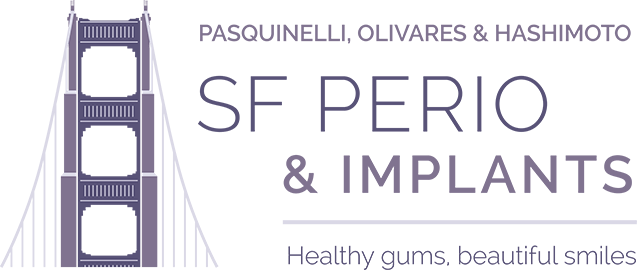How to Know If You Have Dry Socket: Unveiling the Signs and Solutions at SF Perio & Implants

Are you grappling with post-tooth extraction pain? You could be suffering from a dry socket.
But don’t worry, these can be remedied.
Keep reading to learn the signs, symptoms, and remedies of dry socket.
Understanding dry socket
Dry socket, also known as alveolar osteitis, is a post-extraction condition that requires dental intervention.
It’s important to recognize the symptoms of dry socket to safeguard your oral health.
The condition occurs when the blood clot that usually forms after tooth extraction dislodges or dissolves too soon.
This leaves the underlying bone exposed, causing intense pain and potential complications.
Recognizing the signs
Spotting dry socket symptoms is crucial for prompt intervention. SF Perio & ImplantsThis link leads to Home Page suggests keeping an eye out for these indicators:
- Severe pain: Experience pain that extends beyond the typical discomfort after extraction.
- Foul odor or taste: Notice an unpleasant smell or bad taste in the mouth, signaling infection.
- Visible bone: If you can see the bone at the extraction site, it’s a red flag.
Immediate care at SF Perio & Implants
Swift action is imperative if you suspect dry socket.
We, as skilled oral surgeonsThis link opens the Doctor’s page, recognize the significance of both treating and preventing this condition. It’s critical to realize that dry socket occurs in only 1-4% of extractions.
Here’s what to do if you’re suffering from post-extraction tooth pain:
1. Contact us: Reach out to us or your dental professional immediately for guidance.
2. Rinse and clean: Gently rinse your mouth with warm saltwater to maintain cleanliness.
3. Pain management: Your dentist can guide you using over-the-counter pain relievers to ease discomfort.
Your health and safety are our top priorities.
Our experienced team ensures a thorough examination, proper diagnosis, and personalized treatment plan. We aim to alleviate your pain.

Prevention tips
Preventing dry socket is preferable to dealing with its consequences. That’s why we carefully instruct patients on post-procedure care.
We recommend these preventive measures:
- Adhere to post-extraction care instructions
- Refrain from smoking and using straws to minimize the risk of dislodging the blood clot.
- Maintain oral hygiene: gentle brushing and oral hygiene practices promote healing.
Our entire team’s goal is to make you feel comfortable and relaxed.
We are here to listen to your questions and concerns. We also help provide solutions for better health.
Statistics on post-extraction complications
According to the American Association of Oral and Maxillofacial SurgeonsThis link leads to the AAOMS page, up to 4% of tooth extractions result in dry socket.
At SF Perio & Implants, our focus on precision and aftercare significantly reduces the likelihood of complications.
Still have questions? Check out our FAQ
Frequently Asked Questions About Dry Socket
-
Will a dry socket heal on its own?
No, a dry socket typically does not heal on its own. It requires professional intervention to alleviate pain and promote proper healing. Contact SF Perio & Implants for guidance.
-
How do you recognize a dry socket, and what are the signs?
Recognizing a dry socket involves signs such as severe pain, a foul taste, and visible bone at the extraction site. If you suspect a dry socket, consult with SF Perio & Implants for a thorough examination.
-
How is dry socket treated and what professional care is involved?
Fixing a dry socket involves professional care. SF Perio & Implants may recommend cleaning the socket, applying a medicated dressing, and managing pain with prescribed medications.
-
How common is dry socket after tooth extraction?
According to the American Association of Oral and Maxillofacial SurgeonThis page leads to the AAOMS website, up to 4% of tooth extractions result in dry socket.
-
How can one differentiate between normal post-extraction pain and dry socket pain, and when should professional evaluation be sought?
Normal post-extraction pain should gradually subside. Healing should occur within 5 to 7 days following an extraction.
Dry socket pain is often severe and may be accompanied by a foul taste or visible bone. If in doubt, consult SF Perio & Implants for an assessment. -
How do you prevent dry socket?
To prevent this condition, swallow gently without creating suction. Avoid vigorous rinsing, smoking, and using straws during the initial recovery period.
Also, avoid eating nuts, seeds, and crunchy foods that can get stuck in the socket. Avoid alcohol and mouthwash containing alcohol and follow SF Perio & Implants’ post-extraction care guidelines.
Our commitment
SF Perio & ImplantsThis link opens the Home page in San Francisco, CA, understands the intricacies of oral health.
Our experts, Doctors Pasquinelli, Olivares, and Hashimoto, are here to guide you through potential challenges.
Located in the heart of San Francisco, our practice pledges to provide exceptional dental care.
Our commitment to your well-being extends beyond extractions, ensuring a smooth recovery process.
Oral wellness matters: safeguard your smile with SF Perio & implants.
Navigating the nuances of post-extraction care is essential. SF Perio & Implants is your ally in this journey.
Understanding the signs of dry socket empowers you to make informed decisions about your oral health.
Trust SF Perio & Implants for expert guidance and personalized care.
Final thoughts
It’s always a good idea to prioritize your oral health by staying vigilant about potential post-extraction complications.
SF Perio & Implants is your partner in maintaining a healthy and vibrant smile.
Schedule a consultation today for comprehensive dental care.
Or:
- Call us at 415-781-7147
- Email us at info@sfperio.com
We’re conveniently located in San FranciscoThis link opens Google maps, making us easily accessible to those in Linda Mar, East Richmond Heights, Greenbrae, Pedro Valley, Escalle, San Pablo, Murray Park, Rollingwood, and Hillsborough.



